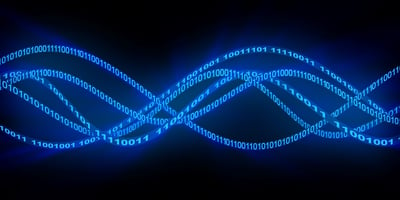Phase noise, which is caused by a signal’s random phase (frequency) fluctuations, can affect the...
How Do Natural Effects & RF Impairments Impact Satellite Transmissions?
Satellite communications signals travel through environments filled with natural effects and impairments that can impact transmissions.
For example, signals must contend with distortions introduced from various interfering sources. Free-space propagation adds additional challenges, including delay, atmospheric losses, and multipath effects, depending on the signal’s specific properties.
Ground-based hardware and satellite payloads can degrade signal quality from factors such as phase noise and amplifier compression. With effects like delay spread due to polarization, multiple-in multiple-out (MIMO) antennas add further complexities to the system.
This blog highlights a few key impairments and reviews how emulating these conditions can improve satcom system testing.
Propagation Delay
Propagation delay, or the total travel time of the signal, is influenced by the distance between the transmitter-receiver pair and propagation velocity, which is how fast the signal can travel through the medium. Since the dielectric constants – that is, the measure of how much the medium reduces signal speed – of both the speed of light in a vacuum and air are similar (1 and 1.00054, respectively), calculations for propagation delay often assume signals travel at the speed of light for simplicity.
With distance being a main factor, signal delay is a key challenge for satellites in geostationary orbit (GEO), as they operate approximately 22,000 miles above Earth’s surface.
Signal Attenuation and Path Loss
Satellite signals often travel long distances between the transmitter and receiver. The quality of the receiver’s performance, however, largely depends on the received signal’s power level. Signals that are too weak can fall below the required threshold, potentially leading to complete data loss.
Free-space path loss (FSPL) is a common way to express how much power is lost (or attenuated) during transit. Since path loss generally increases with frequency, FSPL is typically frequency dependent.
Doppler Shift
A shift in frequency, known as Doppler shift, can occur due to the relative motion between the transmitter-receiver pair. The video below demonstrates the cause of Doppler shift known as the Doppler effect, where a stationary observer hears a higher pitch siren as a police car approaches, the true pitch once perfectly aligned, and a lower pitch as the police car drives away. This phenomenon is due to the siren sound waves compressing in the direction of travel and spreading out in the opposite direction of travel.
Impacting the carrier signal as well as the channel bandwidth, Doppler shift is a significant challenge in low-Earth orbit (LEO) satellite systems. Operating close to Earth’s surface requires LEO satellites to maintain a higher orbital speed to counteract the strong pull of gravity. Satellite receivers must be able to adjust accordingly to properly lock onto the signals to avoid misalignment, modulation issues, and increased bit errors.
Multipath and Fading
Between the transmitter and receiver, signals undergo fading or a fluctuation in signal strength. Primary causes of fading include both shadowing and multipath signal propagation.
Large obstacles, which include buildings and natural obstructions like hills and trees, can block signals. Shadowing refers to a loss in signal strength as a result of these large physical barriers.
Multipath occurs when buildings, vehicles, and other obstacles reflect or scatter the signal along different paths, in addition to its direct line-of-sight (LOS) route. The various paths reach the receiver at different time intervals, leading to constructive interference that effectively amplifies the signal and destructive interference that weakens or cancels out the signal entirely.
Advanced Channel Emulation
Channel emulators, such as the ACE9000, can simulate a range of impairments to replicate dynamic, post-deployment conditions accurately. While the types of impairments vary, a few key examples include:
- Propagation delay: Model the effects of transmitter and receiver separation.
- Signal attenuation and path loss: Apply dynamic signal power levels to emulate changes during receiver performance tests.
- Doppler shift: Introduce frequency and phase shifts to evaluate receiver tolerance.
- Multipath and fading: Emulate fading using Rayleigh or Rician fading profiles.
The video below gives a step-by-step walkthrough on how the ACE9000 performs complex satellite link emulation based on actual satellite behavior using the SATGEN II software platform. By importing two-line element (TLE) data, which contains a satellite’s orbital parameters for any given point in time, you’ll learn how to configure models for satellite orbits, Earth stations, and aircraft as well as assess satellite performance under real-world link conditions.



